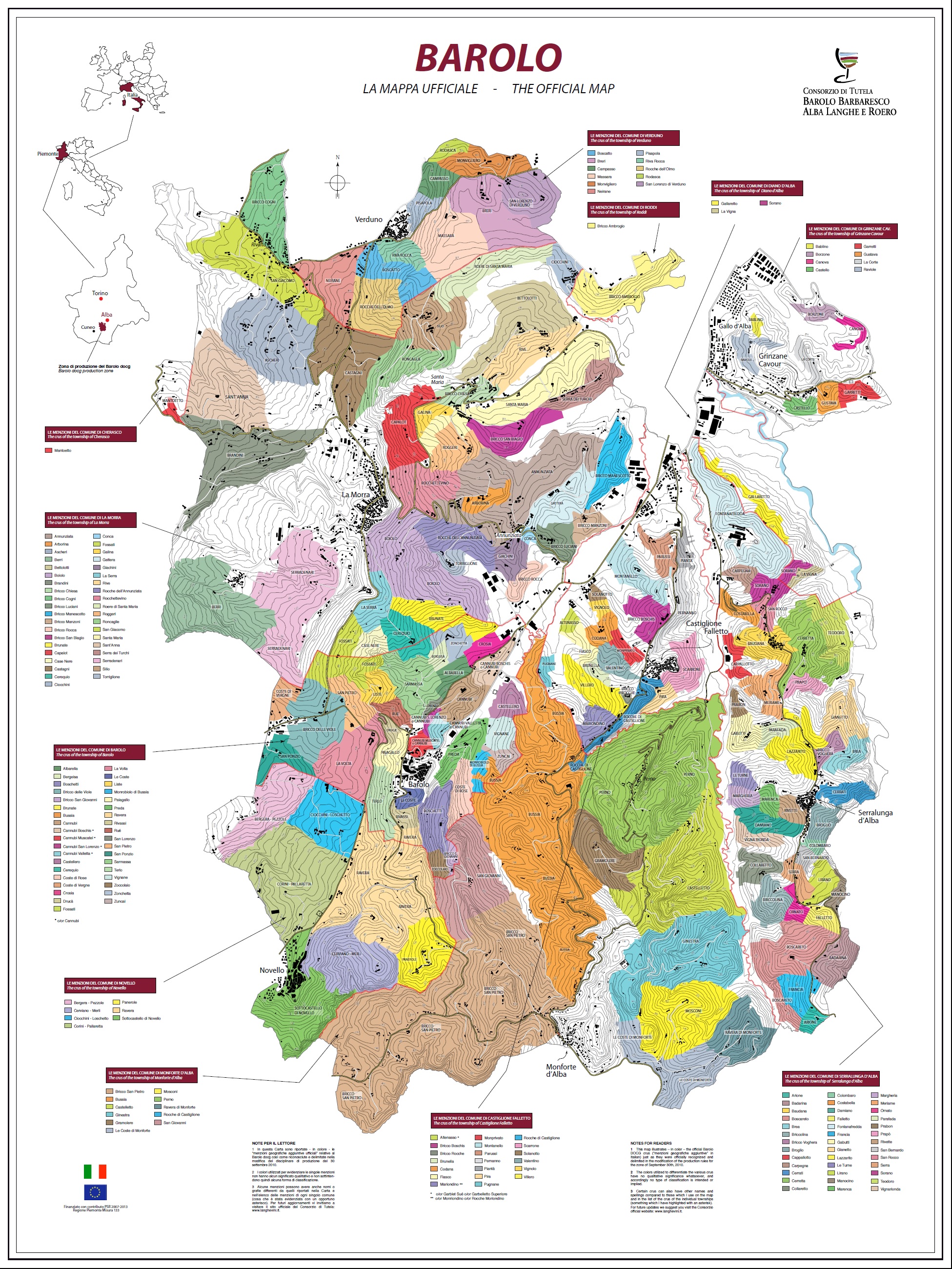Barolo is a red wine with controlled and guaranteed denomination of origin produced in some towns of Piedmont. The Barolo wine begins to appear in the mid-nineteenth century, originating from the homonymous village in the Langhe, in the Province of Cuneo, with the estates and cellars formerly home to the Castello dei Marchesi Tancredi Falletti and Giulia Colbert Falletti di Barolo. It is simply a direct derivative of Nebbiolo grapes and therefore Nebbiolo (or Nebiolo) wine, masterfully vinified to obtain an exceptionally rich and harmonious product, destined to become the ambassador of the Piedmont of Savoy in the European courts. To make Barolo important was and is its structure that expresses a complex and enveloping bouquet, able to develop over time without losing its organoleptic characteristics.
The wines belonging to the Barolo DOCG appellation correspond to the Barolo and Barolo Riserva types and are obtained from the pure vinification of the Nebbiolo grape variety, cultivated according to traditional methods, ie with Guyot pruning and an espalier training system. The specification provides for a refinement period of 38 months, of which 18 in wood, for the basic version and 62 months, of which always 18 in wood for the reserve version.
Nebbiolo has been cultivated in the Barolo area since time immemorial, but it is thanks to the stubbornness of Camillo Benso Conte di Cavour and Giulia Colbert Falletti, the last Marquise of Barolo, that in the mid-nineteenth century they began to produce an exceptionally rich and harmonious wine , destined to become the ambassador of Piedmont throughout Europe. The distinctive character of Barolo is its structure that expresses a complex and enveloping bouquet, of great longevity, that is able to develop over time without losing its organoleptic characteristics.
The production area of Barolo is located in the Langa, a term that according to some scholars derives from "Langues" which are nothing more than tongues of land that extend in a lively game of profiles, modulated by the changing of the seasons. The Barolo production area is located a few kilometers south of the city of Alba, in the territory of 11 Municipalities that follow each other in a suggestive itinerary of hills guarded by imposing medieval castles, including that of Barolo, which gave its name to the wine today famous throughout the world. The area thus includes the territory of the municipalities of Barolo, Castiglione Falletto, Serralunga d'Alba and in part the territory of the municipalities of Monforte d'Alba, Novello, La Morra, Verduno, Grinzane Cavour, Diano d'Alba, Cherasco and Roddi in province of Cuneo.


















